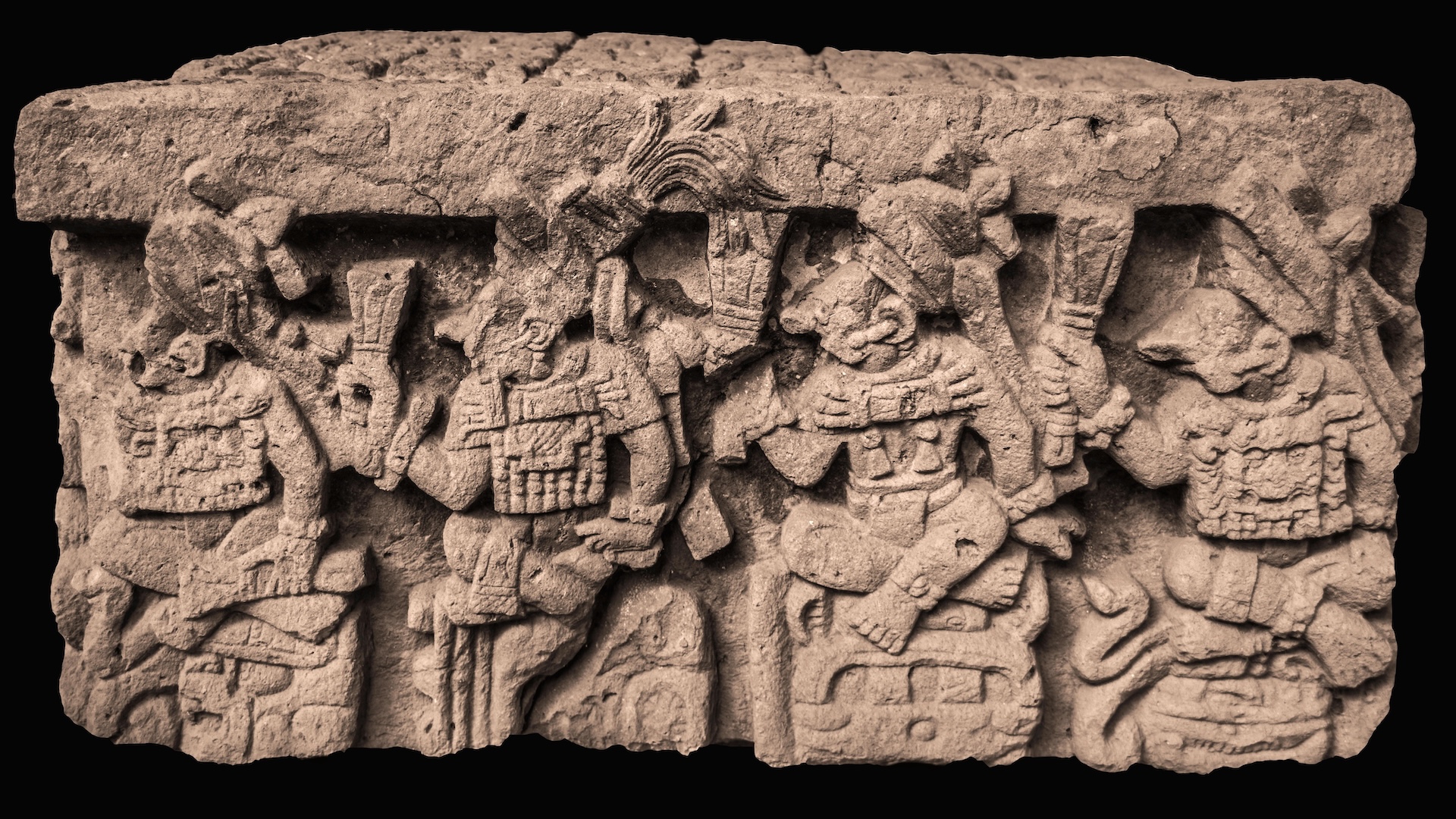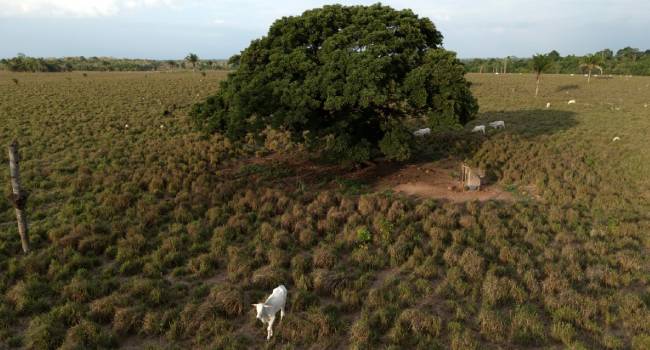By Margherita Bassi
Copyright livescience

Skip to main content
Close main menu
Live Science
Sign up to our newsletter
View Profile
Search Live Science
Planet Earth
Archaeology
Physics & Math
Human Behavior
Science news
Life’s Little Mysteries
Science quizzes
Newsletters
Story archive
Skyscraper-sized asteroid flyby
Diagnostic dilemma
Elusive ‘grumpy’ cat photographed
Anthropologist Ella Al-Shamahi on human origins
How misinformation spreads
Don’t miss these
Archaeology
‘Deciphering these mysterious strings’: How reading the Inca’s knotted cords can reveal past droughts and deluges
Archaeology
Archaeologists discover ‘Land of the White Jaguar,’ centuries-old stronghold of rebel Maya in Mexico
Archaeology
1,600-year-old tomb of Maya city’s first ruler unearthed in Belize
Archaeology
1,400-year-old temple ruins the size of a city block unearthed in Bolivia
Archaeology
‘Such caves weren’t used for ordinary living’: Rare finger grooves from ancient peoples found in glittering Australian cave
Ancient Egyptians
Ancient Egyptian rock art discovered near Aswan may be from the dawn of the first dynasty
Ancient Egyptians
4,000-year-old handprint discovered on ancient Egyptian tomb offering
Archaeology
350-year-old mummified head from Bolivia isn’t what it seems
Archaeology
2,300-year-old arm tats on mummified woman reveal new insights about tattooing technique in ancient Siberia
Archaeology
‘A truly unprecedented discovery’: 3,000-year-old multicolored mural with fish, stars and gods discovered in Peru
Archaeology
Pawnee Star Chart: A precontact elk-skin map used by Indigenous priests to tell an origin story
Archaeology
‘Strange’ tomb in Peru holds skeletons of people with ropes around their necks, hands tied behind their backs, archaeologists say
Archaeology
We know humans arose in Africa, but archaeology is only just uncovering secrets of the continent’s early civilizations
Archaeology
‘Oddly shaped head’ left in Italian cave 12,500 years ago is Europe’s oldest known case of cranial modification, study finds
Archaeology
Tiwanaku: A little-known pre-Incan civilization that built temples and cities high in the Andes
Archaeology
Anthropologist claims hand positions on 1,300-year-old Maya altar have a deeper meaning
Margherita Bassi
17 September 2025
A well-known Maya stone carving known as Altar Q, located at the site of Copán in Honduras, may use hand signs to represent key dates in the Maya Long Count Calendar, a new study claims.
When you purchase through links on our site, we may earn an affiliate commission. Here’s how it works.
A new study claims that Altar Q, made by the Maya in the eighth century A.D., may convey a deeper meaning through “sign language.”
(Image credit: imageBROKER.com via Alamy)
The Maya used “sign language” on an altar around 1,300 years ago, and these signs may represent important dates in the Maya Long Count Calendar, a new study claims.
“This is the oldest text where, to my knowledge, anyone has been able to show that there’s a real, well-defined” script using hand signs that’s on par with other kinds of writing study author Rich Sandoval, a linguistic anthropologist at Metropolitan State University of Denver, told Live Science. “Other researchers and I are pretty confident in saying that the conventions of these hand signs are rooted in sign language.”
However, not everyone agrees with Sandoval’s interpretation, and one expert calls it “implausible.”
You may like
‘Deciphering these mysterious strings’: How reading the Inca’s knotted cords can reveal past droughts and deluges
Archaeologists discover ‘Land of the White Jaguar,’ centuries-old stronghold of rebel Maya in Mexico
1,600-year-old tomb of Maya city’s first ruler unearthed in Belize
In the study, published March 8 in the journal Transactions of the Philological Society, Sandoval analyzed Altar Q, a late-eighth-century rectangular Maya stone altar from Copán, an archaeological site in Honduras. Altar Q’s intricately sculpted four sides depict a total of 16 Copán rulers, each with specific hand positions, as well as hieroglyphs.
Researchers have studied Altar Q since the mid-1800s, and now Sandoval — who calls it “one of the most storied artefacts of Ancient Mesoamerica” in his study — writes that we can learn more about this Classic period (A.D. 250 to 900) stone carving by looking at the rulers’ hands. In fact, he noted, rulers have particular hand positions in much of Maya art.
“Almost anywhere you see [Maya] hieroglyphs, you see a figure, oftentimes in the middle, at least one figure, sometimes multiple figures, holding very unique hand forms,” Sandoval told Live Science in a voice note. “So I have deciphered these hand forms as hand signs with very specific meanings.”
Related: Maya civilization had 16 million people at peak, new study finds — twice the population of modern-day NYC
Sign up for the Live Science daily newsletter now
Get the world’s most fascinating discoveries delivered straight to your inbox.
Contact me with news and offers from other Future brandsReceive email from us on behalf of our trusted partners or sponsorsBy submitting your information you agree to the Terms & Conditions and Privacy Policy and are aged 16 or over.
His interpretation suggests that the Maya, whose civilization in parts of southern Mexico and Central America thrived during the Classic period, had a writing system that used two written scripts, Sandoval explained.
“Many researchers previously thought that the hieroglyphic script was the only script of the Mayan writing system,” he said. His research shows that “there are two scripts to the writing system,” Sandoval added, “so it’s a lot more complicated than we thought.”
Maya writing system
The known Maya writing system consists of over 1,000 hieroglyphs representing words and syllables, many of which are still undeciphered or poorly understood. Because Altar Q features both hieroglyphs and hand signs, Sandoval used it as a sort of Rosetta Stone — an ancient Egyptian decree translated into three ancient scripts. However, Sandoval thinks that, unlike the Rosetta Stone, the hand signs on Altar Q communicate different types of information than its hieroglyphs, meaning they are not translations of each other.
You may like
‘Deciphering these mysterious strings’: How reading the Inca’s knotted cords can reveal past droughts and deluges
Archaeologists discover ‘Land of the White Jaguar,’ centuries-old stronghold of rebel Maya in Mexico
1,600-year-old tomb of Maya city’s first ruler unearthed in Belize
According to the study, the hand signs on Altar Q’s east, west, south and north sides, or panels, represent the dates 9.0.2.0.0 (Nov. 27, 437), 9.19.10.0.0 (April 30, 820), 9.16.13.12.0 (Oct. 21, 764), and 9.17.5.0.15 (Jan. 7, 776). For these dates to make sense, it’s important to understand how the Long Count Calendar works.
Long Count Calendar dates are represented by five “blocks” of days separated by periods. From left to right, these blocks are called b’ak’tun, k’atun, tun, uinal and k’in. The Long Count date 9.19.10.0.0, for example, represents nine b’ak’tuns, 19 k’atuns, 10 tuns, zero uinals and zero k’ins. One k’in is one day; one uinal is 20 k’ins, or days; one tun is 18 uinals; one k’atun is 20 tuns; and 1 b’ak’tun is 20 k’atuns, or 144,000 days. The Maya believed 13 b’ak’tuns (13.0.0.0.0) made up one full cycle of creation. Dec. 21, 2012, marked the end of the cycle that began Aug. 13, 3114 B.C.
It was already known that Altar Q’s hieroglyphs, in their description of a 64-day ritual, imply the use of the Long Count Calendar. The start date of this ritual aligns with a period ending — a Long Count date that ends with at least two zeros, representing an important step in the calendar. As experts had also previously noted, the hieroglyphs indicate that the Copán dynasty started and ended roughly at the beginning and the end of the ninth bak’tun — yet another reference to the Long Count Calendar.
Related: Earliest evidence of Maya divination calendar discovered in ancient temple
Sandoval, however, highlighted an oddity. There were no Long Count Calendar dates expressed directly anywhere on the altar’s hieroglyphs, which was highly unusual for a royal Maya text.
A reproduction of Altar Q from Copan, Honduras. New research suggests that the position of the rulers’ hands conveys a previously unknown meaning. (Image credit: Charles O. Cecil via Alamy)
As for the hand signs themselves, the anthropologist focused on each of the 16 rulers’ free hands. (Most of them are holding something in the other.) By comparing the 16 hand signs to the hieroglyphs, he noted two crucial features: that two distinct hand signs look like known hieroglyph variants of the number zero, and that their patterns of distribution with respect to the other hand signs are similar to those of zeros in Long Count period ending dates.
Sandoval thus assumed that the two hand signs represent zeros and that the 16 hand signs make up four Long Count dates falling in the ninth b’ak’tun. “The implication is that each panel’s hand signs encode the K’atun, Tun, Winal [an alternative spelling for uinal] and K’in values of a Long Count date, read from left to right,” he wrote in the study.
As for the b’ak’tun value, Sandoval claims that it is represented by each panel’s upper rim and the heads of the four rulers — a bar-and-dot configuration that looks like an upside-down hieroglyphic nine. Both the number 9 and the upside-down aspect are associated with death and the Maya underworld, according to the study.
Tying it all together
At this point, Sandoval returned to the hieroglyphs, which included dates written in Calendar Round, a different Maya Calendar system that deals with shorter cycles of time. He found a surprising prevalence of the number 16. For example, the coefficients of the Calendar Round dates for the first and last rulers’ ascension to the throne and death each add up to 16.
“16 is the most important number on this thing,” Sandoval explained. Further hints to the calendar dates included directional associations with nearby monumental texts and the assumption that each date had to be linked to the underworld.
Ultimately, he linked each long calendar date to an important event or situation. The east panel is the death date of the first ruler; the west panel is the death date of the last ruler; the south panel’s date is associated with the 16th ruler’s patron deity, and the north panel’s date comes 16 days after the start of Altar Q’s 64-day ritual.
“The reason why I’m so confident in my initial decipherment here and why it was so convincing to the reviewers is that I have multiple lines of evidence that are independent of one another, but they all support the same finding,” Sandoval explained. “They’re kind of weak on their own, but together they serve as very strong support,” he added. “The observations work as verification because they’re not dependent on one another.”
“Implausible” finding
The Maya writing system is incredibly complex; it uses the design of text and art to integrate two scripts, Sandoval said, adding that “it’s a unique system in the world.” Previously, he researched how speakers of Arapaho — a Native American tribe that had roots in what is now Wyoming, Colorado, Nebraska and Kansas — mixed sign language and speech.
RELATED STORIES
—’Stunning’ discovery reveals how the Maya rose up 4,000 years ago
—13-year drought crippled Maya on Yucatán Peninsula 1,000 years ago, study finds
—Genomes from ancient Maya people reveal collapse of population and civilization 1,200 years ago
Not everyone agrees with his conclusions, however. “It looks very implausible,” Alexandre Tokovinine, an anthropological archaeologist with a specialty in Maya epigraphy at the University of Alabama who was not involved in the study, told Live Science. “Visual and textual data appear manipulated to fit the author’s hypothesis.”
Nevertheless, Sandoval suggested his partial decipherment will underpin future decryption efforts.
Ancient Maya quiz: What do you know about the civilization that built pyramids across Mesoamerica?
Margherita Bassi
Live Science Contributor
Margherita is a trilingual freelance writer specializing in science and history writing with a particular interest in archaeology, palaeontology, astronomy and human behavior. She earned her BA from Boston College in English literature, ancient history and French, and her journalism MA from L’École Du Journalisme de Nice in International New Media Journalism. In addition to Live Science, her bylines include Smithsonian Magazine, Discovery Magazine, BBC Travel, Atlas Obscura and more.
You must confirm your public display name before commenting
Please logout and then login again, you will then be prompted to enter your display name.
‘Deciphering these mysterious strings’: How reading the Inca’s knotted cords can reveal past droughts and deluges
Archaeologists discover ‘Land of the White Jaguar,’ centuries-old stronghold of rebel Maya in Mexico
1,600-year-old tomb of Maya city’s first ruler unearthed in Belize
1,400-year-old temple ruins the size of a city block unearthed in Bolivia
‘Such caves weren’t used for ordinary living’: Rare finger grooves from ancient peoples found in glittering Australian cave
Ancient Egyptian rock art discovered near Aswan may be from the dawn of the first dynasty
Latest in Archaeology
1,900-year-old ‘treasure’ found in Roman-era family’s scorched house in Romania
‘We certainly weren’t exceptional, but now we’re the only ones left’: In new PBS series ‘Human,’ anthropologist Ella Al-Shamahi explores how humans came to dominate Earth
World’s oldest mummies were smoke-dried 10,000 years ago in China and Southeast Asia, researchers find
1,900-year-old oil lamp that provided ‘light in the journey to the afterlife’ found in Roman cemetery in the Netherlands
3,300-year-old ancient Egyptian whistle was likely used by police officer tasked with guarding the ‘sacred location’ of the royal tomb
350-year-old mummified head from Bolivia isn’t what it seems
Latest in News
Anthropologist claims hand positions on 1,300-year-old Maya altar have a deeper meaning
Grumpy-looking Pallas’s cat photographed by camera trap in stunning photo from eastern Himalayas
Skyscraper-size asteroid previously predicted to hit us in 60 years will zoom past Earth on Thursday (Sept. 18) — and you can see it live
‘This needs to happen fast’: Scientists race to cryopreserve a critically endangered tree before it goes extinct
Asteroid Ryugu once had ‘flowing water’, shocking analysis hints
Scientists measure the ‘natal kick’ that sent a baby black hole careening through space for the first time
LATEST ARTICLES
Diagnostic dilemma: A knife broke off in a man’s chest, and he didn’t notice it for 8 years
‘When people gather in groups, bizarre behaviors often emerge’: How the rise of online social networks has catapulted dysfunctional thinking
Science history: A tragic gene therapy death that stalled the field for a decade — Sept. 17, 1999
‘We certainly weren’t exceptional, but now we’re the only ones left’: In new PBS series ‘Human,’ anthropologist Ella Al-Shamahi explores how humans came to dominate Earth
1,900-year-old ‘treasure’ found in Roman-era family’s scorched house in Romania
Live Science is part of Future US Inc, an international media group and leading digital publisher. Visit our corporate site.
Contact Future’s experts
Terms and conditions
Privacy policy
Cookies policy
Accessibility Statement
Advertise with us
Web notifications
Editorial standards
How to pitch a story to us
Future US, Inc. Full 7th Floor, 130 West 42nd Street,
Please login or signup to comment
Please wait…



